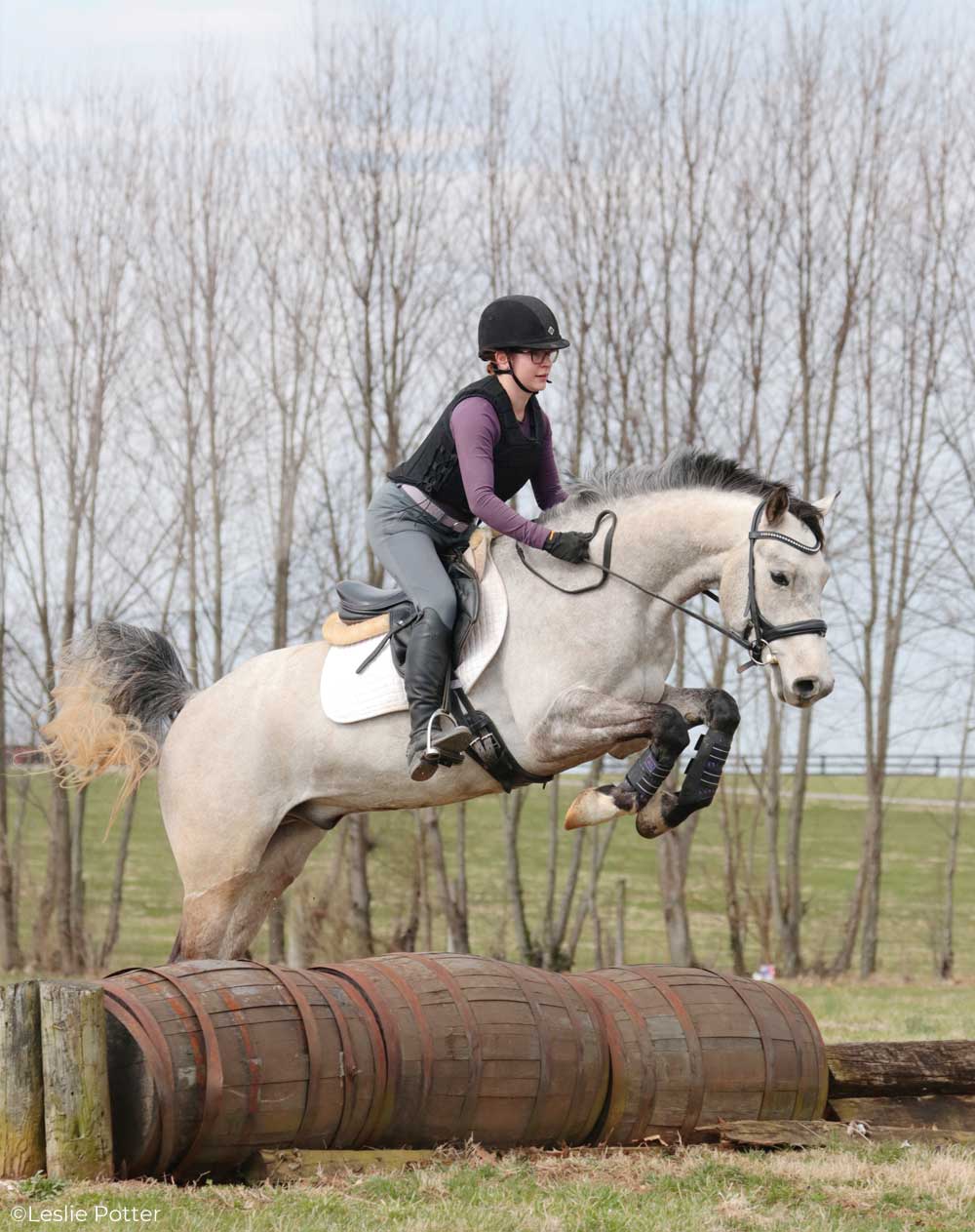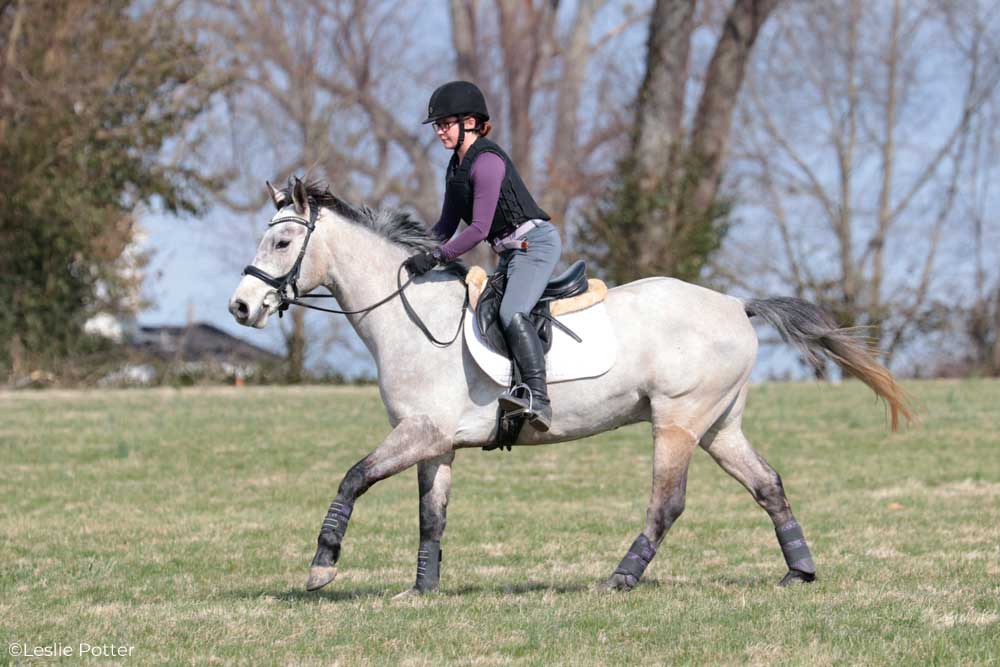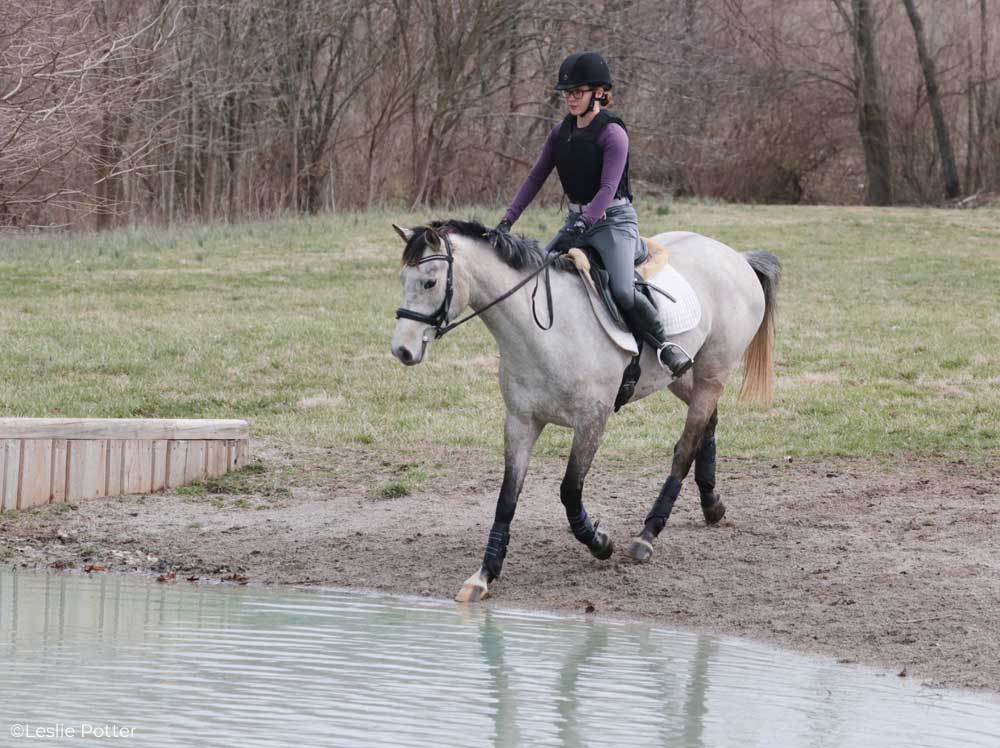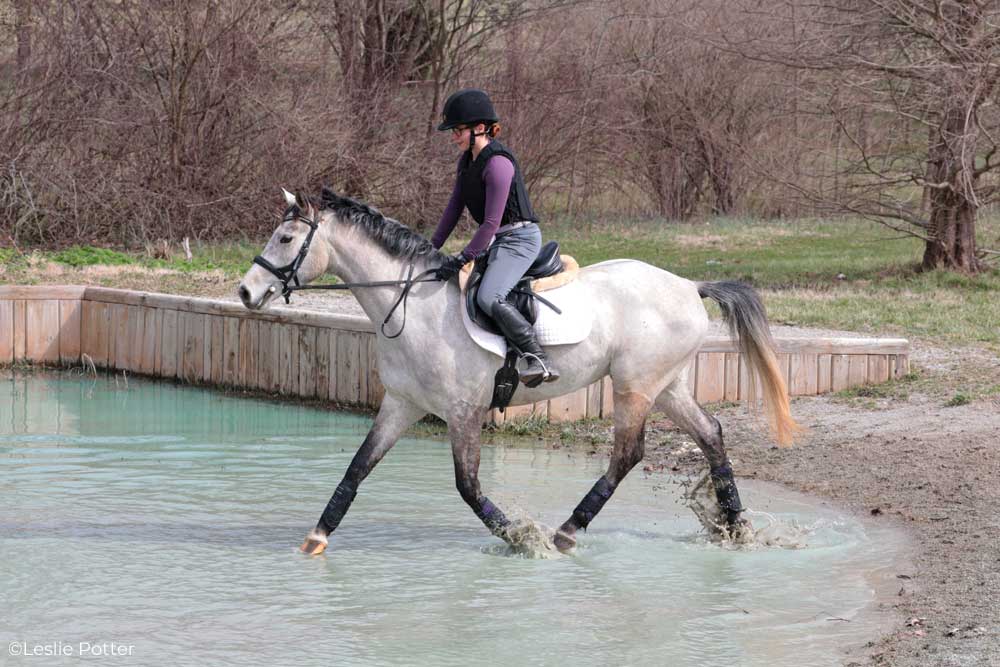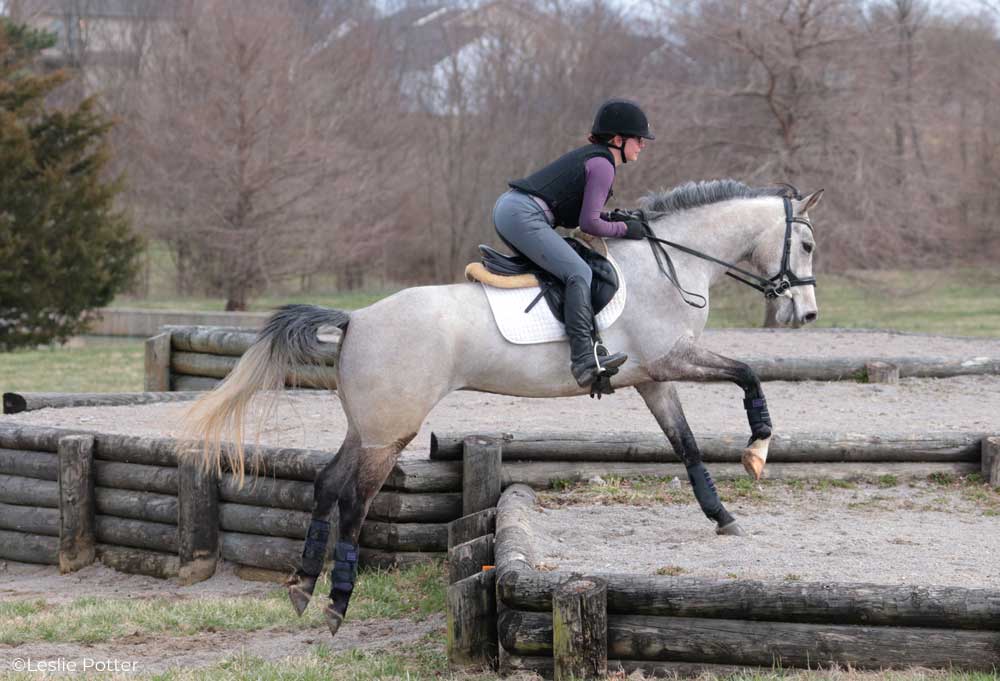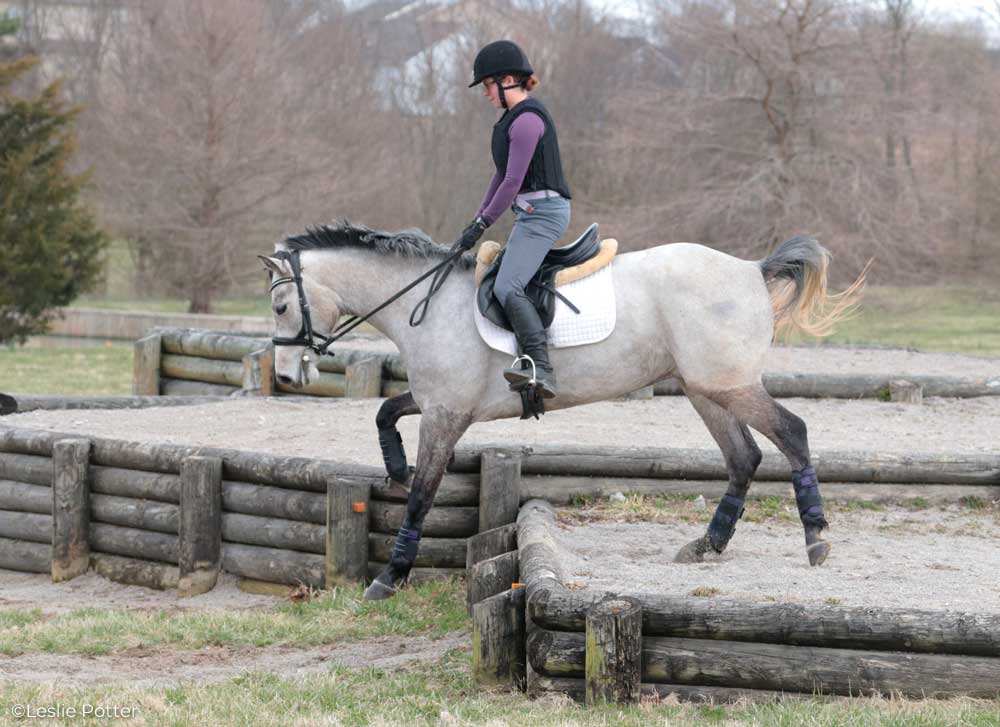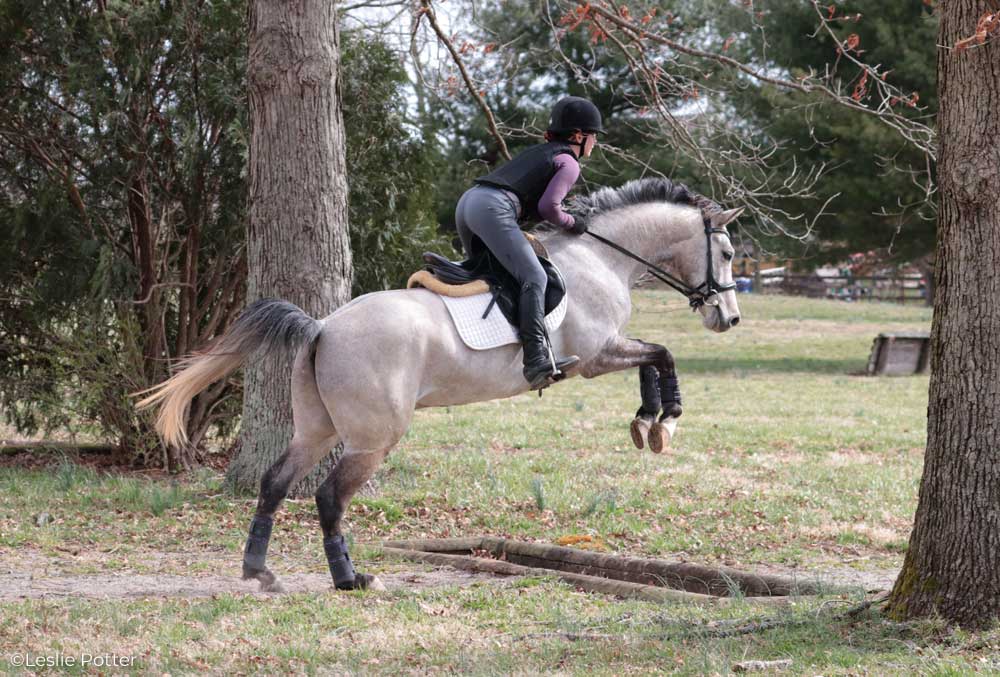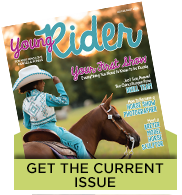
Always wear a properly fitted helmet and protective vest when jumping solid obstacles. Your horse should have boots to protect his legs. You’ll also want a jumping crop and small spurs if your leg is steady and you know how to use them. You may not need to use them, but if your aids require a bit more “oomf,” you’ll be ready.
Getting Out There
First, find an equestrian park or stable that has some cross-country jumps. Talk to your trainer or find an eventing coach nearby to set up a schooling day (usually a group of horses and riders will go at the same time).
Your horse may be nervous if it’s his first time being ridden in the great wide open, but if you’ve done any trail riding, both of you will be more used to this. Everyone will warm up at the walk, trot and canter to get a feel for how their horses are going to act. Horses are usually at ease standing with the group, but the trainer will have you break off one at a time to hop over a log or two.
See how your horse reacts to leaving the group: does he get nappy and not want to move forward? Does he get overly excited and race off? If so, the trainer may send you off in a pair or have you follow a more experienced horse.
If all goes well jumping small obstacles such as logs, railroad ties or barrels, you may be ready to try the more complex elements of cross-country.
There are three obstacles that set cross-country apart from any type of arena jumping: water, banks and ditches. Inexperienced horses may have trouble with one or all of these, so it’s important to introduce them in a positive way.
Water
The first time your horse goes into a water obstacle should be at a walk following behind a more experienced horse. When he is calmly walking in and out, you can try trotting.
Troubleshooting:
Your pony may hover at the edge of the water thinking about it, which is fine—just try not to let him back away from the water’s edge. There’s no need to circle if he doesn’t go in on the first attempt, just let him lower his head to check out the water, moving side to side if he wants.
Most horses will eventually take a step in once they feel comfortable and see another horse walking or standing in the water. This can take 30 seconds or it could take 30 minutes—take the time you need and don’t force him in.
Up and Down Banks
When trying a bank for the first time, start with a very tiny one—under 2 feet. Begin by going up the bank at the trot on the first try, since that will be the easiest gait for your pony to have time to think and enough momentum to easily hop up.
Trot down the bank at a controlled pace and sit up straight, as opposed to leaning your body forward like you would over a normal jump. Let the horse slip the reins through your fingers as he lowers his neck and hops down.
Ditches
Most schooling facilities have a shallow ditch that’s not too wide or scary. Try not to look down at it, and keep your focus up and forward so your horse will do the same. Many horses will take a big leap on their first try, so be prepared: You don’t want to get popped loose and become unbalanced. Grab mane and ride as straight as you can.
Troubleshooting:
If you horse hesitates, allow him time to look at the ditch and understand what you are asking him to do. He can lower his head and neck to sniff the ditch, but continue to squeeze your calves and urge him forward. Allow him to go side to side, but don’t circle and don’t let him back up if you can. Have a confident lead horse pass you and hop over the ditch again. At this point, you can back up or circle as long as it’s your idea and take another approach at the trot. Once your horse pops over the ditch calmly in both directions, it’s time to call it a day.
Always end cross-country schooling sessions on a positive note. Don’t ask too much of your horse, since he’ll have a lot to take in already. It’s important to build confidence progressively for both horse and rider. If you’re a new cross-country rider on an experienced horse, consider yourself very lucky!
This article originally appeared in the May/June 2019 issue of Young Rider magazine. Click here to subscribe!

